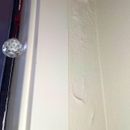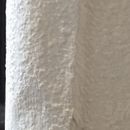Minimizing Mold
Hopefully this is an OK question for GBA. Since I’ve lived in my current apartment, I’ve suffered from what I thought were incredibly awful migraines that would get worse with windy weather. Recently, because of some new streetlights that have been installed over last summer, I shut the blinds completely–but I forgot about how in winter time, this would lead to condensation.
I recently remembered this and decided to check out the window sills. Lo and behold, there was a windowsill full of mold, and not only that but immediately after raising the blind, I started experiencing all the migraine symptoms I would typically get.
It was later at night so I decided to deal with it in the morning. Some things came up and I didn’t get a chance to actually deal with it for a few days. But in this time I was able to confirm that exposing myself to the area, especially on days where the wind was blowing on that side of the building, would bring on the same migraine-esque symptoms.
When I returned to deal with it with a respirator and some goggles, the PPE seemed to work for preventing symptoms, suggesting that the mold could really be responsible. Since it was a small area, I followed these guidelines https://www.buildingscience.com/documents/reports/rr-0210-mold-remediation-in-occupied-homes/view to clean up the area.
I’m fairly set on moving because after going through this, I walked around looking for other problem areas, and I’ve found some water damage to the exterior walls near the ceiling (I’m on the top floor). But also it’s generally an unpleasant place to live for other reasons. So hypothetically if it is mold causing these symptoms, is there anything I can do until I can move? Would a dehumidifier help? Is it worth treating areas that are likely to harbor condensation or mold with something like chlorothalonil? The latter does not seem so great as it is a probable carcinogen. Also, does anyone know of any reputable testing mail-in testing services? EDIT: added a photo of some of the water damage that’s around the unit
EDIT: added another photo, this time of the bottom of an interior wall
GBA Detail Library
A collection of one thousand construction details organized by climate and house part











Replies
Get out ASAP. I was in a bad mold environment and unfortunately I’ve become over sensitized and it’s a problem. I wouldn’t try to fix anything.
Unfortunately I don't have the money to move at this time.
Do you mind sharing more about your experiences?
A dehumidifier might help. You could also try blinds that don't block airflow as much. Venetian blinds are better in this regard. A small fan blowing air behind the blinds will also help. The goal is to minimize condensation risk, and the blinds are letting the inner surfaces of the window get a little cooler. Lowering the indoor humidity with a dehumidifier will help here, as will a small fan circulating air behind the blinds to minimize the "extra cooling" effect caused by the blinds.
There are mold inhibiting paints you can try, but I'd try a dehumidifier and fan first. Interior side window film might also help, since it would let you seal off the window. You could try using interior side window film with a deissicant in the space between the film and the window to help keep that area dry to avoid mold while the window film was up.
Bill
Yes I've decided to just leave the blinds up all the time. I don't think it's just the window though, I strongly suspect there's something going on inside the walls and ceiling, because I got symptoms even before any mold developed on the window sill. It was just because they matched so strongly with the window sill exposure that it stood out to me.
EDIT: just attached an example of some of the other water damage that's in the unit in a few places
That's possible -- if there is excessive moisture inside the walls, then there might be mold inside the walls too.
You could try one of the portable HEPA filters such as those made by Honeywell that might help. Without opening up walls you can only deal with the problem, you can't really "fix" it.
As is often pointed on here too, you should probably check with your doctor about any health issues you may be having.
Bill
Ah okay thanks. Would a dehumidifier also help in general even if it is in the walls?
Here's an example of some of the water damage that's in several places around the unit.
If that peeling paint is due to excessive moisture in those walls, then I bet there are MAJOR moisture problems INSIDE that wall. That probably means lots of mold, and probably rot too. That's not a good thing at all!
A dehumidifier will help if you have excessive indoor humidity levels. My guess from what you've said is that you probably do. Try to stay under 40%RH. Lower is better from a condensation and mold perspective, but lower is also worse from a human comfort perspective. Usually 30-40% is a reasonable balance between the two.
Bill
"If that peeling paint is due to excessive moisture in those walls, then I bet there are MAJOR moisture problems INSIDE that wall. That probably means lots of mold, and probably rot too. That's not a good thing at all!"
I'm actually replying to your comment I quoted (for some reason there is no reply link below the actual comment)
Yes, I agree. So meanwhile, I guess it's HEPA filters and dehumidifiers to at least lower the average load of mold related particles--do you think it would also be worth treating some interior surfaces with concrobium? I've noticed that certain places tend to get moldy quite quickly despite my attempts to keep them clean and dry.
Even for example, a kitchen towel hanging out that's used to dry off washed hands will sometimes go moldy on its own (not really a treatable surface, just an example of what the environment is like). Or the sliding door tracks almost always accumulate mold no matter what I do.
If other things in the house get moldy, you probably have two things going on:
1- Generally high moisture levels, which makes for good mold growing conditions everywhere. A dehumidifier will help with this.
2- High levels of mold spores in the home, probably due to mold in other places, and more spores means mold will start growing in new spots more quickly. A HEPA filter will help with this.
You can't reply after the responses get about 4 levels deep. That's probably a good idea, when things get too nested it can be difficult to read through from the beginning when others are looking through the archives.
Bill
It may not be in the wall, just on the surface. If that wall is cold, condensation will build up on it just as your window. Try spraying some bleach on that wall and clean up whatever is there to see if it is just surface mold then observe how or when the moisture comes back, eg. after a shower, cooking etc.. Do you own this place or just rent? To me, is doesn't look like peeling paint, it almost looks like wall paper that was painted over or the paper on the wallboard getting wet. What type of walls do you have, is it plaster or wall board? Doubtably, but is there a pipe or what not in that section of wall?
As far as the windows, are they locked and tight? Any visible cracks where window meets wood? Does wind infiltrate bringing the moisture with it or is it from condensation from the inside? Do they see any sunshine to aid in drying after being wet? Do you wipe up the water when seen? Is the inside sill wet? Is there a heat source below the window?
1. I'm renting
2. I attached a better picture (it didn't seem to work on this comment--check the original post) which will hopefully make it easier to tell what kind of walls. I don't know if the walls are plaster or drywall. The building was built around 2004, not sure if that's helpful.
3. There is a pipe about 4 feet to the right of that patch. There have been multiple issues with pipes breaking in this wall too.
4. Windows are shut and tight, but some of them have fine cracks.
5. I think it's a combo of both wind and interior moisture. Most windows are either on the north side or under very deep (>8') overhangs so not much sunlight. Also in the PNW so not much sunlight overall.
6. I haven't noticed any water on the sills to be honest. I only thought to check under the window blind when I realized that I had left it shut even through the winter (which usually leads to condensation).
7. No heat source beneath the window.
Yikes. I’d get a cheap pin-type moisture meter like this one:
https://www.lowes.com/pd/General-Tools-Instruments-Digital-Test-Meter/3136919?cm_mmc=shp-_-c-_-prd-_-tol-_-ggl-_-LIA_TOL_216_Construction-Hand-Tools-_-3136919-_-local-_-0-_-0&ds_rl=1286981&gbraid=0AAAAAD2B2W_pdTivJIUuRJ0jRg_6d77B0&gclid=EAIaIQobChMIkuqH3f389QIVPRTUAR0spwi2EAQYASABEgLgCvD_BwE&gclsrc=aw.ds
and measure the moisture levels in the wall areas that concern you. An infrared camera can also be a helpful diagnostic tool for moisture leaks.
If you can document evidence of high moisture levels I’d look into your legal rights. At that point this is your landlord’s problem. Some states and municipalities have laws addressing mold specifically, but wherever you are, a landlord has a general responsibility to provide habitable conditions.
In the meantime, if you can positively pressurize the space with fresh air with a window fan pulling air in, that might help reduce your exposure. Or fans to circulate air and dehumidification.
Good luck.
I agree that this is my landlord's problem for the most part. I am hoping to figure out what I can do in the meantime while I am grappling with them.
Regarding pressuring the space, thanks for that idea. One challenge is that the prevailing wind often changes direction. Do you know if a fan will be enough to overcome a change in wind direction with wind speed of around 10-20 mph?
When it blows from the south, it's not an issue because that side doesn't have too many windows and has very large overhangs. The north wall is where I presume a lot of the water damage and mold is based on the pics I attached. I've also generally noticed in the past that my symptoms were always worse with a northerly wind.
There is a single operable window on the south side, which is where I would put the fan. The remaining operable windows are on the north side, which has zero overhang (another reason why I don't wanna keep a window open on that side).
Basically what I'm trying to avoid is a situation where I'm sucking even more mold particles inside by leaving the south window open during a northerly wind.